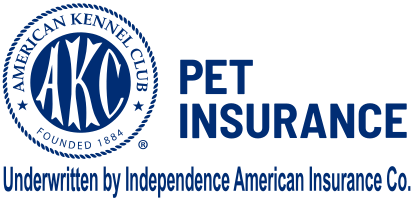Best pet insurance for pre-existing conditions at a glance
If your furry pal has a known health problem before you buy a pet insurance policy, your insurance company may not pay to treat it. That’s because most pet insurance plans won’t cover pre-existing conditions. But there are a few exceptions.
To find the best pet insurance companies for pre-existing conditions, we started with highly rated insurers. We then looked for companies that cover existing health issues in certain situations. (Typically, it's when the condition is curable and hasn’t needed treatment for a minimum amount of time.) These are the companies that came out on top.
Best for incurable pre-existing conditions: AKC
Dog
$40 /month
Cat
$23 /month
AKC offers lots of ways to customize your coverage, but its standard plan lacks benefits many other companies include.
Policy details
Annual max coverage
Unlimited
Reimbursement rates
70%, 80%, 90%
Deductibles
$100 - $1,000
Policy highlight
Covers pre-existing conditions in some states.
AKC pet insurance stands out in the pet insurance industry. It covers both curable and incurable pre-existing conditions once your pet has been insured for 365 consecutive days. Say your cat needs medication for a chronic kidney condition. With AKC, you’ll need to pay for it yourself for the first year of the policy. After that, AKC will cover it in many states.
This is a unique feature, as most other pet insurance companies don’t cover incurable pre-existing conditions at all.
» READ MORE: AKC pet insurance review
Best for broad coverage: ASPCA
Dog
$39 /month
Cat
$19 /month
ASPCA offers generous coverage and multiple plan options, including an accident-only policy.
Policy details
Annual max coverage
Unlimited
Reimbursement rates
70%, 80%, 90%
Deductibles
$100, $250, $500
Policy highlight
Broader coverage than most other plans.
ASPCA plans cover more than most others, including dental illnesses and behavioral therapies. Although ASPCA doesn’t cover most pre-existing conditions, curable health issues are the exception. They must be symptom- and treatment-free for at least 180 days. However, if your pet has had any knee or ligament issues in the past, those won’t be covered going forward.
» READ MORE: ASPCA pet insurance review
Best for straightforward waiting periods: Hartville
Dog
$39 /month
Cat
$19 /month
Hartville offers a range of coverage options, including an accident-only plan and wellness coverage.
Policy details
Annual max coverage
Unlimited
Reimbursement rates
70%, 80%, 90%
Deductibles
$100, $250, $500
Policy highlight
Covers most curable pre-existing conditions.
Hartville stands out for waiting periods that are easy to understand. A waiting period is the time between when you buy your policy and when the coverage takes effect. Hartville’s waiting period is 14 days for all accident and illness coverage, including orthopedic problems. (Some companies make you wait six months to a year for orthopedic injury coverage.)
Hartville covers most curable pre-existing conditions as long as they’ve been symptom-free without treatment for at least 180 days. Pre-existing knee and ligament problems are never covered.
» READ MORE: Hartville pet insurance review
Best for exotic pets: Nationwide
Dog
$50 /month
Cat
$26 /month
Nationwide can cover a wide range of accidents and illnesses, but some options are available only by phone.
Policy details
Annual max coverage
$10,000
Reimbursement rates
50% - 80%
Deductibles
$250, $500, $1,000
Policy highlight
Covers dogs, cats, birds, rabbits and other pets.
Nationwide is unique in providing coverage for not only dogs and cats but also other pets such as rabbits, birds, guinea pigs and snakes.
Nationwide doesn’t cover most pre-existing conditions. However, you can request a review if your pet hasn’t shown signs of a curable condition for at least six months. After the review, the company may agree to cover the condition.
» READ MORE: Nationwide pet insurance review
Best for quick claims: Pumpkin
Dog
$32 /month
Cat
$15 /month
Pumpkin offers a comprehensive accident and illness plan that covers dental illnesses and some pre-existing conditions.
Policy details
Annual max coverage
Unlimited
Reimbursement rates
80%, 90%
Deductibles
$100 - $1,000
Policy highlight
PumpkinNow service can reimburse you while you’re still at the vet.
Pumpkin has a service called PumpkinNow, which expedites processing for claims over $500. You could get reimbursement in your bank account as soon as 15 minutes after filing your claim.
Pumpkin will cover most curable pre-existing conditions as long as they’ve been treatment- and symptom-free for 180 days. However, this doesn’t include knee or hind leg ligament problems.
» READ MORE: Pumpkin pet insurance review
Best for older pets: Spot
Dog
$35 /month
Cat
$17 /month
Spot offers a wide range of coverage choices for pet owners but won’t pay your vet directly.
Policy details
Annual max coverage
Unlimited
Reimbursement rates
70%, 80%, 90%
Deductibles
$100 - $1,000
Policy highlight
Broad coverage, including microchip implantation.
Spot may be a good pick if you have an older dog or cat, as it has no upper age limit for enrollment. The company generally doesn’t cover pre-existing conditions. But if a condition is curable, and your pet has been symptom-free without treatment for 180 days, it may be covered.
Knee and ligament conditions are an exception. They’re never covered if they occur before your policy’s start date or during a waiting period.
» READ MORE: Spot pet insurance review
Does pet insurance cover pre-existing conditions?
Most pet insurance companies won't cover costs related to pre-existing conditions. A pre-existing condition is any illness or injury that occurred before you bought your pet's policy or during your waiting period.
Insurance companies have this rule to prevent you from buying a policy only after your pet gets sick. So if your pet showed symptoms of an ear infection before your policy started, pet insurance typically won’t pay to treat it.
Note that pre-existing conditions exclusions apply to accident and illness coverage. If you buy a wellness plan, it will generally pay for checkups and other preventive care regardless of your pet’s medical history.
» MORE: What does pet insurance cover?
Curable vs. incurable pre-existing conditions
Many pet insurance companies differentiate between curable and incurable pre-existing conditions. While incurable issues are rarely covered, some insurers may cover curable ones after the pet has gone a while without symptoms.
Curable pre-existing conditions can heal completely with treatment. Some insurers will cover curable conditions if your pet remains symptom-free for six to 12 months.
Examples of curable pre-existing conditions might include:
Respiratory infections.
Urinary tract or bladder infections.
Vomiting and diarrhea (non-chronic).
Broken bones.
Cuts and bruises.
Kennel cough.
Incurable pre-existing conditions are those that your pet will have for a lifetime. These include chronic diseases or conditions with no known cure. Insurance policies typically don’t cover these conditions if they’re present before the policy starts or during a waiting period.
Examples of incurable pre-existing conditions might include:
Allergies.
Cancer.
Diabetes.
Arthritis.
Chronic kidney disease.
Hip dysplasia.
Epilepsy.
Heart disease.
When you first buy a policy, many pet insurance companies require a recent vet checkup to establish a baseline of your pet’s health. This can also help identify any potential pre-existing conditions.
» MORE: The best pet insurance companies
Does pet insurance cover bilateral conditions?
A bilateral condition involves body parts that come in pairs, like hips or knees. Pet insurance may not cover bilateral conditions like hip dysplasia if one side was affected before the policy began. If your pet previously had issues with one, insurers often exclude the other side, too, because the condition is likely to recur.
Say your dog tore her right cruciate ligament a year before you bought your policy. Your pet insurance company may decide that ligament problems are a pre-existing condition. Therefore, it might not cover a future ligament issue on the left side.
If your pet insurance policy lapses, anything your pet has been diagnosed with up until that point can be considered pre-existing. That means it may not be covered once you reinstate the policy. Keep your policy active by paying your bills on time and renewing before the expiration date.
Does pet insurance cover hereditary or congenital conditions?
Hereditary conditions are diseases or disorders that your pet inherits from a parent. Examples include Addison’s disease, elbow dysplasia and hypothyroidism. Congenital diseases are ones your pet develops at birth. (Some conditions may be both hereditary and congenital.)
Many plans cover hereditary or congenital conditions as long as your pet hasn’t shown symptoms before coverage begins. Others have limitations or extra charges.
How do insurers determine pre-existing conditions?
Insurers will often ask for your pet's medical history or veterinary records when you apply for a policy or when you file your first claim. These records provide insight into any pre-existing conditions. In some cases, if the history is unclear, insurers might require a vet exam.
To avoid surprises, some insurers allow you to request a medical history review. This review gives you a full breakdown of what will be considered “pre-existing” for your pet. If your insurer differentiates between curable and incurable conditions, it can also tell you which of your pet’s issues might be covered after a symptom-free period.
Insurance providers have varying rules for how they handle pre-existing conditions. Always read the policy's fine print and ask questions if you’re unsure about your pet’s coverage.
How to find insurance for pets with pre-existing conditions
Finding pet insurance for pets with pre-existing conditions can be hard, but it's not impossible. Here’s how to navigate the process.
Look for exceptions. Companies like the ones above may cover curable conditions if your pet has been symptom-free for a specified period. Meanwhile, AKC covers all pre-existing conditions once you’ve had continuous coverage for a year.
Review your pet’s medical history. This will give you a feel for what the insurance company might classify as pre-existing. Your vet may be able to help clarify which conditions might be considered chronic or curable, and if pet insurance is worth it for your pet.
Enroll early. The sooner you sign your pet up for a health plan, the less likely they are to have existing issues.
Self-insure. If you have an older pet with health issues, pet insurance might be very expensive or simply not cover the problems your pet has. In these cases, you might be better off setting aside an emergency fund for vet care.
» MORE: How much is pet insurance?
Pet insurance star rating methodology
NerdWallet’s pet insurance ratings reward companies for customer-first features and practices. Ratings are based on weighted averages of scores in several categories, including consumer experience, scope of coverage and the ability to customize your plan. We give higher ratings to companies that cover a wide range of medical treatments and that offer perks such as live chat support and direct vet pay. To calculate each insurer’s star rating, we adjusted the scores to a curved 5-point scale. See our full pet insurance methodology.
These ratings are a guide, but we encourage you to shop around and compare several insurance quotes to find the best rate for you. NerdWallet does not receive compensation for any reviews. Read our editorial guidelines.






